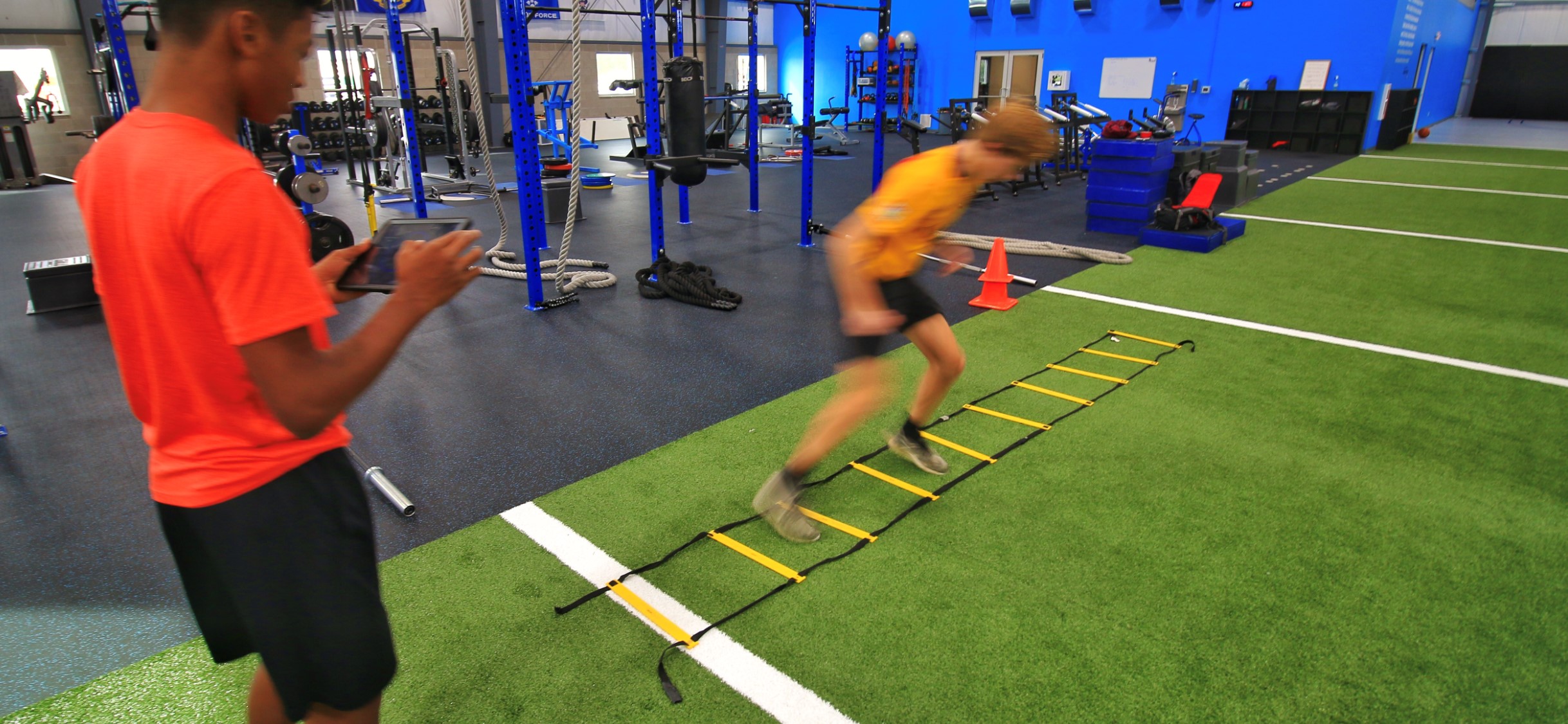How Konect Sports used Movesense to develop a speed training system in 10 months – interview with CEO David Troup

When the starting pistol fires, or the football snaps, the athlete with the fastest reaction time holds a distinct advantage. Konect Sports, a Green Bay, Wisconsin-based startup is using Movesense to help athletes react faster. The company will demonstrate a new product in the Suunto booth at the 2019 Consumer Electronics Show in Las Vegas. The Konect Speed Training product is among the first multi-sensor applications for Movesense sensors that were conceived of and launched in under one year. We spoke with their CEO, David Troup, ahead of the show to learn more.
What will Konect Speed Pro and Konect Speed Training improve performance?
It’s about quantification of athlete speed. The Konect Sports sensors are worn on the wrists, ankles, and chest, and they measure reaction time, acceleration, rotation, and speed in real-time. Coaches and trainers can use these measurements to analyze form and technique during speed and agility drills, and to identify areas for improvement.
We think there are some obvious ways that coaches can use this data, but we’re really excited about a lot of the other applications. We did a product demo at a sports medicine clinic, and I think there’s a lot of ways we can help athletes rehabilitate after an injury.
You have a track record in sports and wearables. Tell us about your background.
I founded Xensr (pronounced ‘sensor’), a wearable action sports sensor that tracked location, speed, and jump height, among other things. We made it easy for athletes to feed this data into their phone, their smartwatch, or their laptop, so they could see how fast they were going or how high a jump was, and get real metrics on what their session looked like, all displayed visually.
The sensor could be synced point-of-view cameras like the Go-Pro, or cameras operated by nearby friends. They could lay the data over a map to see exactly where they were when the hit their highest speeds. The data could also be overlaid on the video of the action itself, so if you wanted to sit around and show your friends the results of your windsurfing session at the end of the day, there was a graphic sitting right on the screen.
That sounds like a great idea.
I’m really proud of what we were able to accomplish, but there were a couple headwinds we were working against. It came at a time when there was a lot of interest in wearables, but there wasn’t a lot of hardware. We had to make our own, which we did. The cost of developing and building hardware for small markets weighed heavily on the company and ultimately resulted in its demise.
How did you meet Movesense?
My current company, Konect Sports, is the direct result of my experience with Xensr. I wanted to use sensors to help athletes increase their agility and speed. When we were in the early stages, we started talking about all the things we wanted to measure. I knew that building a new sensor would be a challenge. There were a couple of no-name vendors offering a product, but there were a lot of drawbacks to going that route.
We found Movesense at the Consumer Electronics Show in Las Vegas. We quietly bought a couple of developer kits and began experimenting with them. Our initial tests showed that their sensor offered just about everything we wanted. So we reached out to them to tell them what we were making. To be honest, they were surprised to hear from us, because they thought we were in the business of making our own hardware.
Working with Movesense, we get to focus on the actual application instead of being bogged down in costly hardware development. It comes with fantastic support. It’s done to their quality, which is a gold standard. From my end, it’s much less expensive in terms of time and resources.
How did working with Movesense help you launch faster?
If you build your own sensor, you might spend a year working out hardware bugs. Movesense has a lot of that figured out, and they’ve worked hand-in-glove with us to tailor things to our application.
We took part in the NFL’s First and Future contest. It’s a Shark Tank-style pitch event and we were selected out of 150+ companies as one of the nine finalists. We went from pitch to product in 10 months. That was Konect Speed Pro. Along the way, we developed the concept for Konect Speed Training. From the time we had our idea, we were able to develop a product in seven months.
What kind of support did Movesense offer?
We’re one of the first multi-sensor Movesense applications, and they’ve been really excited to see our progress. They’re support has been great.
What will people see at CES?
We’re bringing Konect Speed Training. It’s a stationary workout station style product in which the user reacts to an athlete avatar and is timed on their reactions and difficulty. The app training scenarios are done in the context of the athlete’s sport. So that if you are a defensive back, you can react to the action of a receiver, and vice versa. We also have a fun, interactive demo, where people are asked to do one movement, than two movements, then three or four in a row. We built that as a demo for trade shows, but it has turned out to be really popular among athletes. We hear all the time about teams competing to see who can last the longest.
